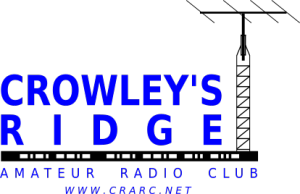Understanding Nets in Amateur Radio
Nets are a crucial part of amateur radio operations, providing structure and organization to group communications. Whether for fun, handling traffic, or managing emergencies, nets allow many operators to participate in an efficient and organized way.
What is the Purpose of a Net?
A net serves as an organized tool to manage communication among multiple operators on a shared frequency. It goes beyond casual radio traffic by providing structure, helping operators stay coordinated.
- Social Nets: These are often used for fun, where operators check in to catch up, share updates, and discuss common interests.
- Traffic Nets: Designed to handle message traffic in an efficient, low-tech way.
- Emergency Nets: These are essential in emergencies, where maintaining clear and effective communication can be lifesaving.
No matter the type, nets allow for organized, controlled communication. In an emergency, if you have priority traffic, announce your call when check-ins are invited. If the situation is critical (life or death), state your callsign suffix and "Emergency Traffic" when it's clear to do so.
Tactical Callsigns
Certain specialized nets, especially during events or emergencies, use tactical callsigns. These are position-based identifiers like "Finish Line" or "First Aid Station," allowing quick identification of the operator's role without needing to remember individual callsigns.
- Tactical callsigns are established in a pre-net briefing.
- You are still required to use your FCC callsign every 10 minutes during transmissions.
- If you aren't briefed on tactical callsigns, you should contact the net control on a different frequency to clarify.
Preparing for a Net
Before the net starts:
- Tune In Early: Tune to the frequency 5-10 minutes before the scheduled start time. This allows you to check your equipment and ensure you’re ready.
- Clear the Frequency: Feel free to chat if you arrive early, but be sure to clear the frequency at least 60 seconds before the net starts.
Net Announcements and Check-Ins
The net control operator will make an announcement and then begin requesting check-ins. This may vary, so listen carefully for specific instructions. You may be asked for:
- Your full callsign or just the suffix (the letters after the number).
- Specific groups, such as only mobile stations, emergency traffic, or stations with suffixes from A-N.
Once you've checked in, you might be asked for your name and location, and later, to participate in the net's purpose.
- If you’re in a hurry or can’t stay long, say "in and out" after your callsign when checking in.
- If you need to interrupt with important information, use the term “recheck” to get the net control’s attention.
During the Net
Once you've checked in, follow the net control's instructions for any further participation. Stay attentive:
- Practice Note-Taking: Even if you’re not running the net, practice writing down callsigns as they’re called in. This builds your skill and prepares you for times when you may need to step in as net control.
- Follow the Rules: Every net has rules. Pay close attention to the instructions and follow them carefully.
Net Control Responsibilities
One day, you may find yourself as the only available operator to run the net. Being familiar with the procedures and having good organizational skills will help you lead the net effectively and potentially make a big difference in times of need.
Final Thoughts
Nets provide a vital organizational structure to amateur radio, allowing multiple operators to communicate effectively. By learning how nets work, paying attention to procedures, and practicing note-taking and communication, you can be a valuable contributor to the amateur radio community and even help manage emergency communications when needed.
Subscribe to our newsletter
We will get back to you as soon as possible.
Please try again later.
All Rights Reserved |
Hosted by FireTEXT Dispatch Solutions
